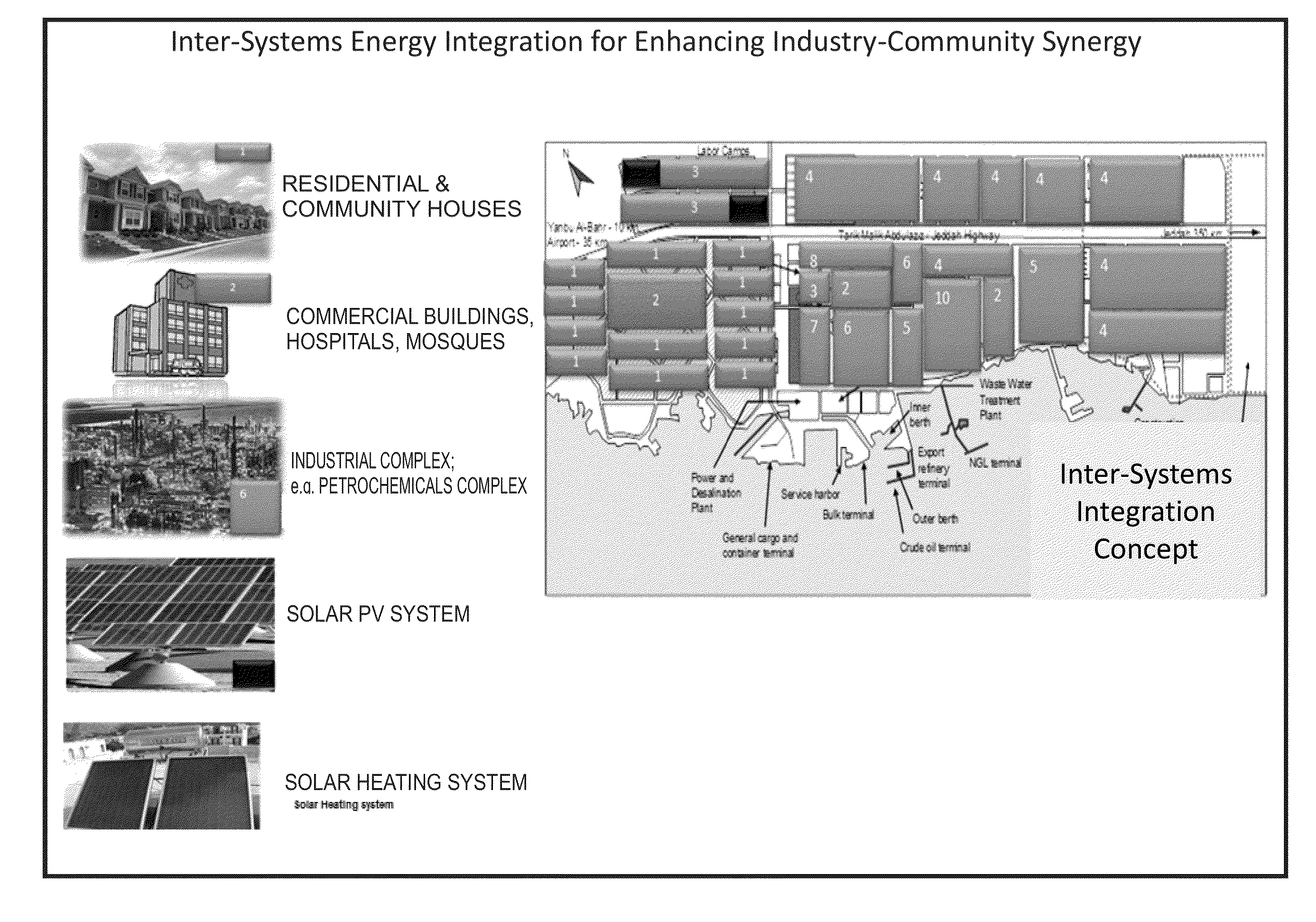Systems, Computer Readable Media, and Computer Programs For Enhancing Energy Efficiency Via Systematic Hybrid Inter-Processes Integration
a technology of energy efficiency and integrated processes, applied in the direction of cad techniques, process and machine control, instruments, etc., can solve the problems of difficult control of processes, impracticality of direct inter-process integration, and negative impact on the environment of the world, so as to improve energy efficiency and reduce greenhouse gas emissions.
- Summary
- Abstract
- Description
- Claims
- Application Information
AI Technical Summary
Benefits of technology
Problems solved by technology
Method used
Image
Examples
Embodiment Construction
[0072]The present invention will now be described more fully hereinafter with reference to the accompanying drawings, which illustrate embodiments of the invention. This invention may, however, be embodied in many different forms and should not be construed as limited to the illustrated embodiments set forth herein. Rather, these embodiments are provided so that this disclosure will be thorough and complete, and will fully convey the scope of the invention to those skilled in the art. Like numbers refer to like elements throughout. Prime notation, if used, indicates similar elements in alternative embodiments.
[0073]Terms
[0074]The following terms may be used throughout:
[0075]FCp: Heat capacity flowrate of a hot or cold stream
[0076][FCp1h]: Interval Heat capacity flowrate of hot stream #1
[0077][FCp1c]: Interval Heat capacity flowrate of cold stream #1
[0078]MM Btu / h.° F.: Million British thermal units per hour. Degree
[0079]Qc: Cooling duty required
[0080]Qh: Heating duty required
[0081][...
PUM
 Login to View More
Login to View More Abstract
Description
Claims
Application Information
 Login to View More
Login to View More - R&D
- Intellectual Property
- Life Sciences
- Materials
- Tech Scout
- Unparalleled Data Quality
- Higher Quality Content
- 60% Fewer Hallucinations
Browse by: Latest US Patents, China's latest patents, Technical Efficacy Thesaurus, Application Domain, Technology Topic, Popular Technical Reports.
© 2025 PatSnap. All rights reserved.Legal|Privacy policy|Modern Slavery Act Transparency Statement|Sitemap|About US| Contact US: help@patsnap.com



